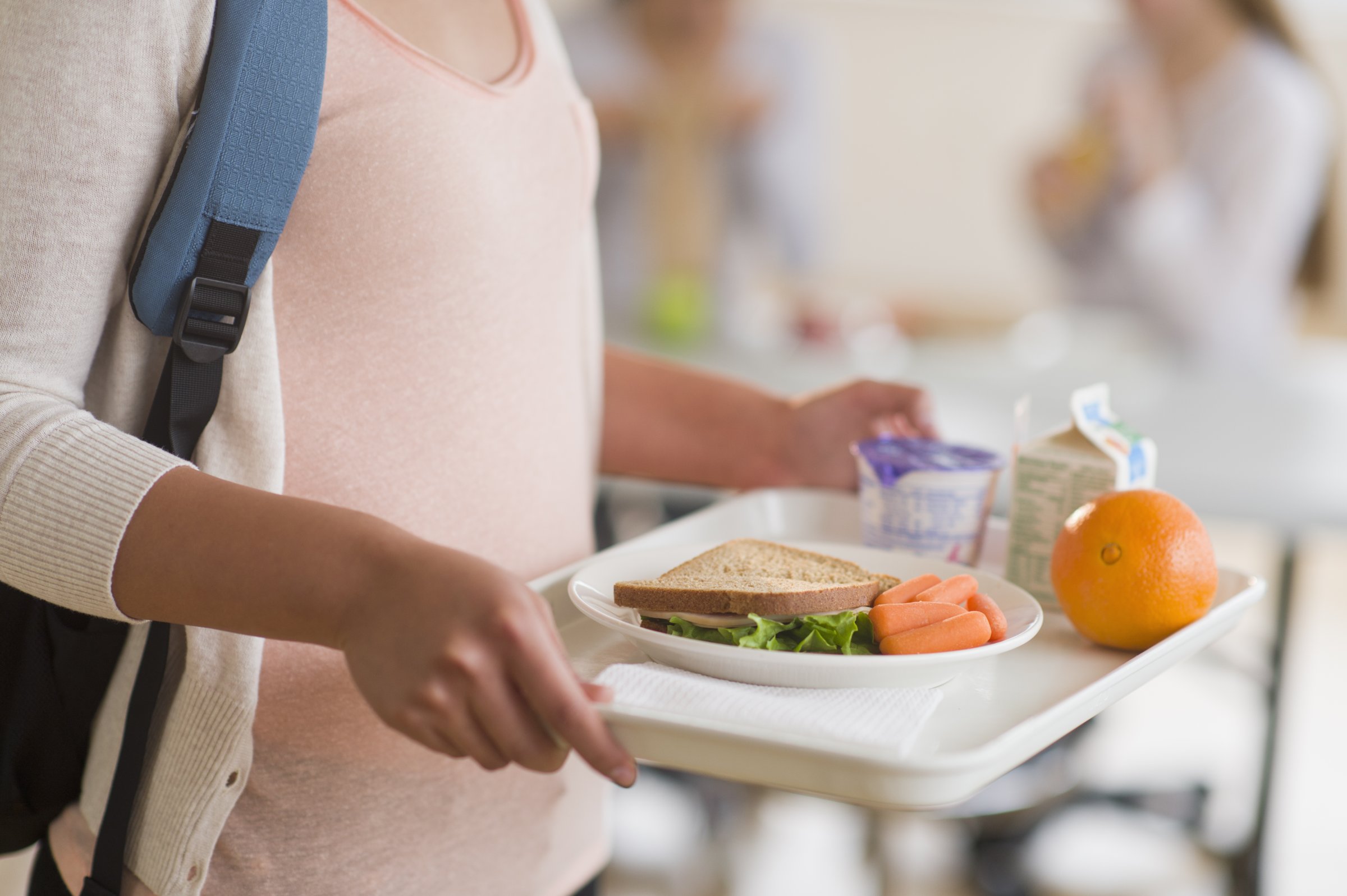
As the battle rages on over whether or not to scrap healthier options in public school lunch, a new survey suggests students actually like the nutritional meals they’re being offered. Well, at least they like it enough to keep from complaining to school administrators about it.
Last school year, administrators reported students started off complaining about the healthier take on lunch, after the USDA introduced new standards in 2012 that called for a reduction in sugar, sodium and fat in meals and the addition of more whole grains, vegetables, and fruit in an effort to confront childhood obesity.
But most had come around by the spring, they reported in a new study backed by the Robert Wood Johnson Foundation. Now, around 70% of elementary school students “generally like the new lunch,” they said. Middle and high school administrators reported similar reactions, with 70% and 63% of students “generally” liking the new lunches, respectively.
Schools also report few drop-offs in school lunch participation with the advent of the new standards. About 64.6% of elementary schools said “about the same” number of students purchased school lunches last school year, compared to the year before.
“The updated meals standards are resulting in healthier meals for tens of millions of kids,” said Lindsey Turner, lead author of the first study, and co-investigator for Bridging the Gap, a research program of the Robert Wood Johnson Foundation (RWJF), which funded the study in a statement. “Our studies show that kids are okay with these changes, and that there have not been widespread challenges with kids not buying or eating the meals.”
Yet, according to the new survey to be published in an upcoming issue of the Childhood Obesity journal, high school students and students in rural schools have been more reluctant to accept the changes. About 25% of middle and high school administrators reported noticing “a little more” plate waste during the 2012-2013 school year, while 16% of middle schools and 20% of high schools reported noticing “much more” waste.
Administrators at rural schools also reported more plate waste and more complaints than their urban counterparts, which is troubling given the higher rates of obesity among youth in rural areas. But among poor urban youth, the researchers found higher rates of consumption and more meal purchases—suggesting those kids opting out of the school lunch program are those who can afford to eat elsewhere.
“It is possible that widespread implementation of national policy has been effective for improving the diets of socioeconomically disadvantaged children,” said the study’s authors, “but more research is needed to understand the effect of changes in the meal standards on children’s participation and dietary intake.”
There has been much debate over the Department of Agriculture’s updated school nutrition standards this year. In fact, Monday’s survey results stand in contrast to a recent USDA report that showed about 1 million fewer students chose to eat school meals every day during the 2012-2013 school year. The School Nutrition Association, a long time supporter of healthy options for kids, rolled back some of its support earlier this year due to the burden the standards place on already cash-strapped schools.
In May, House Republicans ok’d a spending bill that would allow schools to opt out of following the healthy school rules, which pump up the amount of fruit, vegetables, and whole grains served to kids at school while reducing fat, sugar, and sodium. But champions of the standards, including First Lady Michelle Obama, argue rolling back the standards would be a bad choice for kids.
In a statement Monday, the School Nutrition Association said the survey’s “perceptions about school meals do not reflect reality.”
“More kids aren’t buying lunches,” Diane Pratt-Heavner, spokesperson for the School Nutrition Association, tells TIME.
More Must-Reads from TIME
- Why Trump’s Message Worked on Latino Men
- What Trump’s Win Could Mean for Housing
- The 100 Must-Read Books of 2024
- Sleep Doctors Share the 1 Tip That’s Changed Their Lives
- Column: Let’s Bring Back Romance
- What It’s Like to Have Long COVID As a Kid
- FX’s Say Nothing Is the Must-Watch Political Thriller of 2024
- Merle Bombardieri Is Helping People Make the Baby Decision
Contact us at letters@time.com